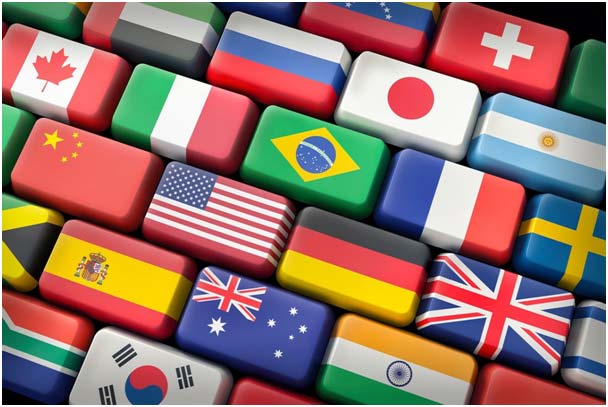In the era of unprecedented global connectivity, businesses are increasingly venturing beyond their domestic borders, seeking to penetrate diverse markets and forge connections with a worldwide audience. Yet, this international expansion presents a unique problem: how can a brand uphold its identity while simultaneously adapting to the delicate cultural landscapes of various regions?

This is where the crucial practice of localization steps in. Localization encompasses the meticulous process of tailoring a product, service, or content to suit a specific locale or market, ensuring that it strikes a chord with the local audience while preserving the brand’s intrinsic identity.
Put differently, localization and the process of global branding are perhaps the best and most crucial parts of the company’s product promotion strategy to reach new customers and open international markets, which is precisely why companies must invest both time and resources to ensure the worth of their localization efforts.
To make things more straightforward, this article will focus on the pivotal role of localization in global branding and strategies to masterfully achieve brand consistency across diverse cultures.
Understanding Localization: The Key to Global Success
First of all, it’s important to note that localization goes beyond mere translation of content. While correct language translation is crucial, localization also encompasses cultural, social, and even legal adaptations. This can involve modifying images, colors, symbols, and other elements to align with the values and preferences of a particular culture. Here are the three pillars of successful localization for global success:
Language Matters, but Context is Crucial
When it comes to localization, language is usually the first thing we think about. Accurate content translation is fundamental, but understanding cultural context is equally vital. A phrase or tagline that resonates in one culture might not have the same effect in another. For example, certain idioms or puns may not translate well or, even worse, may convey unintended meanings.
Visual Elements: Beyond Words
Images, graphics, and even color schemes play a pivotal role in localization. For instance, Western cultures associate red with love and luck, but it symbolizes danger in some Asian cultures. Therefore, a brand should evaluate its visual elements to ensure cultural appropriateness.
Adaptation to Cultural Sensitivities
Respecting cultural norms and values is paramount. This includes considerations like religious beliefs, social practices, and even legal regulations. A well-localized brand understands and navigates these sensitivities to avoid unintentional offense or misunderstanding.
Achieving Brand Consistency in a Global Context with Localization
Maintaining brand consistency across cultures is a delicate balancing act. It involves harmonizing the brand’s global identity with localized elements to create a unified but adaptable presence. Here are some strategies that can help businesses achieve this balance:
- Establish a strong core identity. Before embarking on global expansion, a brand must have a well-defined core identity. This encompasses its values, mission, and visual identity. When this core is robust, it serves as a stable foundation for adaptation.
- Create clear brand guidelines. Develop comprehensive brand guidelines that outline the core elements that must remain consistent across all adaptations. This could include logo usage, color schemes, typography, and tone of voice. These guidelines serve as a reference point for all localization efforts.
- Collaborate with local experts. Engaging local experts, such as marketing professionals or cultural consultants, provides invaluable insights. They can help navigate the intricacies of a particular culture and ensure that the brand’s message is both accurate and resonant.
- Iterative feedback loops. Localization should not be a one-time effort. Establishing feedback loops with local teams or partners allows for continuous refinement. Regular communication ensures that businesses promptly address any cultural or market shifts.
- Invest in translation technology. Leverage cloud technology to streamline the localization process from start to finish. Computer-assisted translation tools, machine translation tools, and translation management systems, coupled with comprehensive project management and analytics capabilities can all help in managing multilingual content across different regions.

Case Studies: Brands Nailing Localization
In the dynamic arena of global branding, several industry giants stand out as shining examples of successful localization strategies:
McDonald’s: Savoring Success on a Global Plate
McDonald’s, the fast-food behemoth, has mastered the art of localization with finesse. While proudly donning its globally recognized golden arches and logo, McDonald’s understands the paramount importance of catering to local palates. A stellar example of this astute approach is India, where beef consumption is relatively low due to cultural and religious considerations.
McDonald’s has astutely curated a diverse menu offering various delectable vegetarian options, seamlessly integrating them into their repertoire. This strategic move respects local sensibilities and propels McDonald’s to the forefront of India’s fiercely competitive fast-food landscape.
Nike: The Universal Swoosh, Local Appeal
Nike, a brand synonymous with athletic excellence worldwide, brilliantly marries its iconic swoosh with region-specific marketing strategies. Nike resonates with the local audience by strategically featuring athletes and influencers indigenous to a particular area. This approach elegantly marries the global brand’s overarching identity with a deeply rooted local appeal.
Whether partnering with a football legend in Brazil or a basketball icon in China, Nike’s astute localization strategies ensure that its message transcends linguistic and cultural barriers, resonating authentically with global audiences. This harmonious blend of the universal and local is a testament to Nike’s global branding and localization prowess.

In the end, these case studies stand as shining examples of how astute localization efforts can catapult a brand to new heights of success in the global market, affirming that understanding and embracing local nuances is key to achieving resonance and relevance on a worldwide scale.
Conclusion: A Harmonious Blend of Local and Global
Localization is not about diluting a brand’s identity but about enhancing its relevance in diverse markets. Achieving brand consistency across cultures requires a nuanced approach that balances global elements with local adaptations.
By investing in cultural understanding, clear guidelines, and ongoing collaboration, businesses can not only bridge cultural gaps but also thrive on a global scale. With localization as a cornerstone, brands can establish meaningful connections with audiences worldwide, fostering loyalty and driving sustainable growth.







